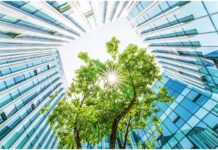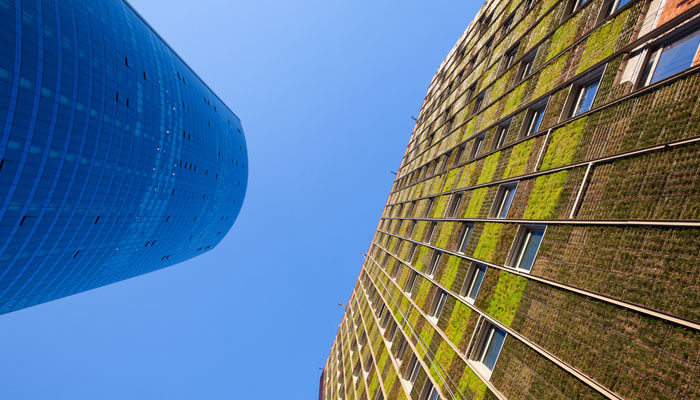World Construction Today – There are certain actions owners and operators of large commercial buildings may take to enhance impact on the environment, decrease carbon emissions, and save money on energy as Australia advances promises to net zero emissions. Building optimization and efficiency is a critical technique to minimise operational expenditure while improving the sustainability goals of constructed assets in light of inflation’s effects on many businesses’ costs and its spillover effects on consumers.
The two possible methods for increasing a building’s energy efficiency are capital spending and operational improvement, according to CIM founder and CEO David Walsh.
While both have merit, one should always prefer capital expenditures on new equipment to the more intelligent use of current equipment. The energy one doesn’t utilise is always the least expensive. He claims that enhancing the efficiency of equipment through control systems might result in immediate power usage reductions and thus lower energy expenditures.
The ROI can frequently be calculated in weeks or months rather than years. The majority of modifications that have an effect on operational efficiency are related to HVAC systems, which use the majority of the energy in a building. HVAC system optimization alone might result in an efficiency gain of 10% to 15%.
The six actions that Australian building owners and operators can take right away to have a significant immediate effect are listed below.
1. Implement a BMS control plan
Run a control plan for a building management system (BMS) to assess, pinpoint, and address shortcomings. When backed by solid building analytics data, these optimization projects are likely to produce noticeable efficiency gains.
- Lockouts for outside air temperature
- Regulation of cooling tower temperature
- Calls for the cooling and heating of chillers
- Setpoints for zone temperatures
- Cleanup operation at night
- CHW setpoint for temperature
2. Lockouts related to outside air temperature
By removing heat from the condenser of the chillers, cooling towers lower the temperature of the water that the chillers use. There are more effective methods that take into consideration the quantity of moisture that is present in the air, or wet-bulb temperature, whereas chiller manufacturers define the highest water temperature the coolers can function at to meet the cooling loads. All cooling towers should ideally track the temperature of the outside air wet bulb and adjust their controls to it with an offset somewhere between 4 and 5 C.
A tip for improvement:
With a minimum temperature of 20 °C (adjustable) and a maximum temperature of 29.5 °C, the condenser temperature of the water should be adjusted based on the building’s exterior air temperature, wet-bulb + 5 °C (adjustable).
3. Boiler heating and chiller cooling
To meet the building’s cooling needs using central cooling systems, one must make sure the chillers turn on at the appropriate moment. Early chiller activation raises the possibility of excessive energy use and may shorten the lifespan of the equipment with time.
Similar to this, boilers should only be turned on when necessary. Boilers should not be operated earlier than necessary as this increases consumption without attaining the desired results and raises the risk of equipment failure due to short rotation (continuously turning on and off). For both the chilled and hot water valves, it is essential to establish the proper setpoint and time period.
A tip for improvement:
Chiller
- The cooling call must be made if the optimum chilled water valve setting is 90% for 10 minutes.
- The cooling call must be turned off if the maximum chilled water valve level falls below 20% for 10 minutes.
Boiler
- The heating call should be made if the maximum hot water valve position is 90% for 10 minutes.
- The heating call must be turned off if the maximum hot water valve level falls below 20% for 10 minutes.
4. Setpoints for zone temperatures
Facilities managers and contractors frequently change zone temperature setpoints to resolve tenant concerns. However, it’s crucial to keep the big picture in mind and align all setpoints to prevent neighbouring systems from colliding.
A tip for improvement:
- Install more energy-efficient lighting; cold light is preferable to minimise the possibility of illumination warming the thermostat settings and causing temperature fluctuations.
- Clean the ducts, vents, and filters, which can collect dirt, dust, and other debris.
- Update any outdated HVAC components or systems.
- Modify ductwork: New office and cubicle layouts can necessitate ductwork relocation.
- Installing new window coverings that are energy-efficient will help you save money on electricity and make your home more comfortable.
- Increase thermal properties by adding window film, which reduces hot spots and offers UV protection and sun control.
5. Purge operations at night
Buildings in warmer areas need more cooling at night because the surrounding light and temperature factors are more favourable. Commercial buildings operate as thermal storage, and temperatures may rise while vacant during the weekend. This significantly increases the air conditioning strain on buildings. A night purge is advised to exhaust the building during the dawn hours and eliminate the surplus cooling load in order to reduce this burden.
A tip for improvement:
- When ambient conditions are at their worst, usually between 2 and 4 in the morning, a night purge typically functions. Its role is to vent the heated air that has accumulated inside the structure when the interior temperature is high (more than 25 °C). When the HVAC system is turned off for an extended period of time, this typically happens in warmer climes and is noticeable in office buildings (i.e., over the weekend).
- To bring cooler air into the building while venting warm air without using the central chilled water system, experts advise running the supply blower with the economy dampers fully open. It’s crucial that the fans don’t run on high for longer than an hour. An analysis of the thermal benefit vs energy consumption must be done if the device is operated for longer than an hour.
6. Setpoint for chilled water temperature
Based on the demands of the building, the building management system can modify the chilled water temperature setpoint of the chiller. In order to preserve internal thermal comfort conditions throughout the warmer months, buildings are often built with the chilled water set to 6 C. It is important to know when to increase the chiller’s setpoint temperature since rebooting up too quickly could affect occupants’ thermal comfort while resetting down too soon could affect the chillers’ energy use and operation.
A tip for improvement:
- If the average chilled water valve level is less than 60%, the chilled water temperature threshold must be increased.
- If the average chilled water valve level is more than 70%, the chilled water temperature threshold must be dropped.
- Every five minutes, the chilled water temperature threshold will be reset by 0.5°C.
- The setpoint for the minimal chilled water temperature is 6 C.
- The setpoint for the optimum chilled water temperature is 9 °C.




































